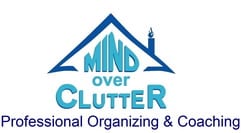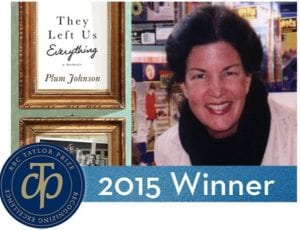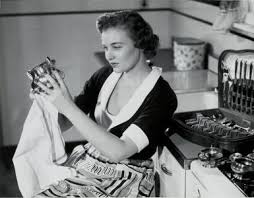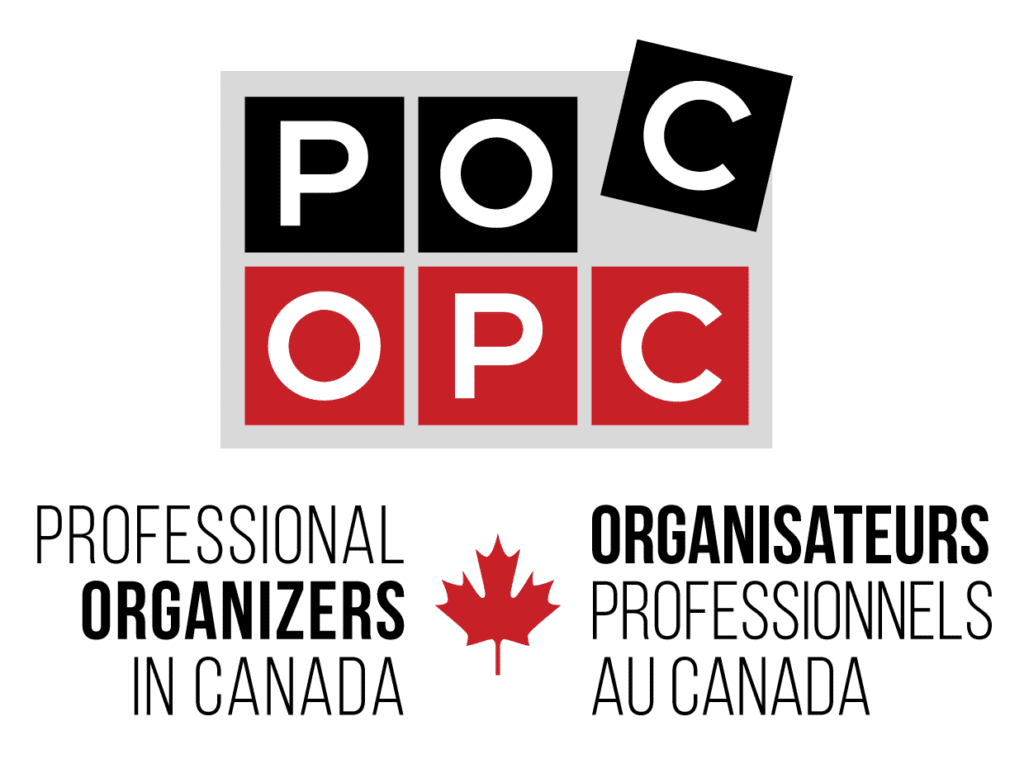Latest Blog Posts
Today I am reviewing a booked written by Plum Johnson, They Left Us Everything a memoir. She is a Canadian author from Oakville, Ontario. It is an easy to read , novel style story about her experience emptying her parent’s home. Once you start reading it you become engaged in the story and can’t put the book down. It takes you on a roller coaster of emotions: sad, humorous, happy and thoughtful.
Many people have had the experience of going through years of possessions and trying to figure out
- how to divide things between family members,
- where to donate things,
- the division of labour between family members on how the work will get completed and
- when to sell the home.
This book takes the reader through the many pitfalls and solutions that Plum and her siblings discover to solve these difficult situations.
One of my favourite parts of the book is the chapter on how they divide up their parents’ possessions between the 4 siblings . Plum has made an annotated inventory list complete with photographs, 422 items, 8 pages long. There are two categories; one for all the furnishings that have been appraised and priced and one for historical items that were considered priceless. They take turns picking things off the list until everything is gone. It is very interesting to read the how the process goes, who selects which items and why, and how competitive they can be during this process.
The book has practical suggestions but mostly it gives the reader emotional and psychological insights into the relationships that they have with their parents and that their parents have with each other. It also shows how these relationships affect how they experience dealing with their parents’ possessions. Learning from their experiences can help each of us to understand the many layers of feelings that affect each of us and our relationships with people and “stuff”
A few memorable thoughts from the book are;
- “The most valuable things come from within yourself”
- “Are you untangling the stuff in the house or untangling yourself from your parents?”
- “Gradually things in the house relinquished their hold on us.”

Post a comment about the part of the book you liked best or a tip to make clearing an estate easier.
Julie Stobbe is a Trained Professional Organizer and Lifestyle Organizing Coach who brings happiness to homes and organization to offices, in person and virtually. She has been working with clients since 2006 to provide customized organizing solutions to suit their individual needs and situation. She uses her love of physical activity to reduce clutter, in your home and office. She guides and supports you to manage your time. If you’re in a difficult transition Julie can coach you to break-free of emotional clutter constraining you from living life on your terms. Online courses are available to help instruct, coach and support your organizing projects. Get started by downloading Tips for Reorganizing 9 Rooms.
Contact her at julie@mindoverclutter.ca
Click here to learn more about her online course Create an Organized Home.
Twitter – Facebook – Facebook group Organizing Mind and Space
Reading time – 5 minutes
My guest blogger is Ron Thiessen of Thiessen Farms .  He has been farming all his life. As a child he worked with his dad and then took over the farm. He sells his produce at markets and has developed a Community Supported Agricultural Program (CSA) of over 200 families who buy a share of his crops and pick up their produce every week at his farm from May to October. He is located in Jordan Station, Ontario , Canada. He has written on organizing your seeds, choosing your crops and charting their progress.
He has been farming all his life. As a child he worked with his dad and then took over the farm. He sells his produce at markets and has developed a Community Supported Agricultural Program (CSA) of over 200 families who buy a share of his crops and pick up their produce every week at his farm from May to October. He is located in Jordan Station, Ontario , Canada. He has written on organizing your seeds, choosing your crops and charting their progress.
Crop Planning and Choosing Seeds
Brad’s Atomic Grape Tomato
“Elongated cherries in clusters. The colour (and flavor!) is a full-blown assault on the senses – lavender and purple stripes when immature, turning to technicolor olive-green, red, and brown/blue stripes when fully ripe. Really wild! … this amazing variety a good candidate for market growers …” (from www.rareseeds.com)
When we saw this new tomato in a seed catalogue it immediately became a must grow variety for Thiessen Farms in 2017. It looks and sounds amazing!
And when we found seed for the hottest-of-hot peppers – Ghost, Carolina Reaper & Trinidad Scorpion – there was no doubt that they would be on the list too, along with Glass Gem corn, Superschmelz kohlrabi and Golden Wa Wa cabbage.
- Golden Wa Wa cabbage
I’ll admit it. We’re suckers for a cool sounding name and a fancy description. That’s why our seed list has grown to more than 450 varieties of over 60 different vegetables and herbs. But it’s really a cheap thrill. For a few bucks we get to try something new. Sometimes it will turn out great and become a favourite. Other times it’s a disappointment and we never grow it again. But it’s always fun experimenting!
The first week in January is always seed ordering time. We pour over the seed catalogues devouring the particulars of all the vegetables, herbs & flowers, choosing the varieties we will grow in the upcoming season. The selection of seeds is overwhelming making it a delightful yet daunting task.
Here’s how we make our choices …
1. We know what we grew in previous years.
We keep a master list – a spreadsheet that names each crop and variety we grew last season, the amount of seed we have on hand, the year purchased, the company it came from, and the number of days from seeding until harvest. This gives us someplace to start. When the seeds are ordered, all this data is updated & any new varieties are added and those we will not be growing are eliminated.
2. We keep good records – an awful lot of records.
We have a chart where we record every seed we sow in the greenhouse – the date we seeded, the amount, the date the first seeds poked up through the soil, the date we transplanted them and how many, and a spot for random comments. We have more charts where we record everything that gets planted out in the fields – whether it is direct seeded or transplanted from the greenhouse, the variety, the amount, the date. Throughout the growing season we make written notes – both quick observations that we jotted down on the run and more formal evaluations of the different vegetables and how they grew, and produced, their yields, taste, plant health … Photographs are also very helpful for this and so easy to take with cellphones. We find these records invaluable and refer back to them often.
3. As commercial growers we look to our customers for information
What crops sold well and which ones did not, what caught the customers attention, what vegetables are they asking for … We have more charts. For each day at the farmers’ market we record what we brought, how much we sold, the prices and the weather for the day. There are similar charts for each Community Support Agricultural Program (CSA )pick-up. These give us a clear picture of what to grow and how much based on actual sales.
4. What would be fun and interesting to grow!
We always try to grow something new that we have not done before. Recent examples include kalettes , cauliflower artichokes and fava beans.
The seeds are arriving almost daily now
Close to 500 packets of seeds – different sized envelopes, some paper, some foil, even a cloth bag or two, and at least one larger 25 pound sack (snow peas). Add in any leftover seeds from other years, various jars of seed that I saved myself, and we end up with well over 600 different containers of seeds.That’s a lot of seed to deal with and to keep organized!
Proper storage is necessary to keep the seeds viable
Cool and dry storage being the most important conditions. We keep the seeds in our workshop in small, plastic shoe boxes. A label on the lid notes what seeds are inside. These plastic boxes are then stored in larger plastic bins all with secure lids. This keeps them dry, clean & safe from curious animals (ie cats, or even mice – in case the cats are not doing their job!).And there the seeds wait until it’s time to plant them.
What have you learned from Ron Thiessen a commercial grower that will help you to organize your garden this year?
 Julie Stobbe is a Trained Professional Organizer and Lifestyle Organizing Coach who brings happiness to homes and organization to offices, in person and virtually. She has been working with clients since 2006 to provide customized organizing solutions to suit their individual needs and situation. She uses her love of physical activity to reduce clutter, in your home and office. She guides and supports you to manage your time. If you’re in a difficult transition Julie can coach you to break-free of emotional clutter constraining you from living life on your terms. Online courses are available to help instruct, coach and support your organizing projects. Get started by downloading Tips for Reorganizing 9 Rooms.
Julie Stobbe is a Trained Professional Organizer and Lifestyle Organizing Coach who brings happiness to homes and organization to offices, in person and virtually. She has been working with clients since 2006 to provide customized organizing solutions to suit their individual needs and situation. She uses her love of physical activity to reduce clutter, in your home and office. She guides and supports you to manage your time. If you’re in a difficult transition Julie can coach you to break-free of emotional clutter constraining you from living life on your terms. Online courses are available to help instruct, coach and support your organizing projects. Get started by downloading Tips for Reorganizing 9 Rooms.
Contact her at julie@mindoverclutter.ca
Click here to learn more about her online course Create an Organized Home.
Twitter – Facebook – Facebook group Organizing Mind and Space


People have tried to find electronic solutions for most things that used to be done by paper. However, would a paper To-Do list work better for you than an electronic one? Here is a thought provoking blog post on the topic. Which ever system works best for you, you must check your list. People will make lists but not look at them. Use a system that keeps your to-do list in your mind.
Why the Old-School Paper To-Do List Is Superior as a Productivity Tool (& How to Make It Work for You in Under 5 Minutes)






Contact her at julie@mindoverclutter.ca
Click here to learn more about her online course Create an Organized Home.
Twitter – Facebook – Facebook group Organizing Mind and Space
I have organized a lot of sewing rooms and craft rooms. I know my clients enjoy their new spaces and are very talented people. I never thought about it from a mental health perspective. Annabelle Short from Wunderlabel has put together a great infographic. I hope you enjoy it.
Sewing can help you express your creative side and gain better peace of mind. And in addition to granting you greater mental health, it can actually keep you healthy as well. If you want greater peace of mind and less clutter in your life, check out this infographic from Wunderlabel to see the 16 ways in which Sewing can make you healthier!






Contact her at julie@mindoverclutter.ca
Click here to learn more about her online course Create an Organized Home.
Twitter – Facebook – Facebook group Organizing Mind and Space
By Harold Taylor
One of my favourite newsletters is by Harold Taylor. He is a Time Management Expert. Sometimes I feel like I am old and live in the past. This article so clearly states my views about technology that I see that my past helps me to manage my future.
An online poll of over 1000 Canadian adults (Angus Reid/Vision Critical Toronto Star, January 26, 2013) revealed that 90% of the respondents believed their smartphones made their lives more convenient. So convenient, evidently, that 30% of them went online before getting out of bed, 31% at the dinner table, 29% in the washroom and 42% before falling asleep at night,
Smartphones may be smart, but they lack intelligence. Why are we so willing to be at the beck and call of an idiot? The Internet leads anywhere, which for the undisciplined means nowhere. Why browse away the hours? Email, computer games and social media are endless, but our time is not. Why do we behave as though we will live forever?
Research shows that the Internet and digital technology can have a negative impact on our ability to learn, focus, pay attention, memorize and relate to others on a personal basis. It also gobbles up our time, encourages busyness and multitasking and stifles creativity.
The futures of our businesses, personal lives, and our nations do not depend on the development of technology, but on our ability to manage the technology we develop.
If you need help with time management routines please contact me. We can discuss different methods of time management during an in-person or virtual appointment.






Contact her at julie@mindoverclutter.ca
Click here to learn more about her online course Create an Organized Home.
Twitter – Facebook – Facebook group Organizing Mind and Space
Certified Professional Organizer®, Sarah Buckwalter, has over 17 years of experience running an award-winning organizing business, Organizing Boston. With a desire to help everyone get organized, Sarah developed Organizing U. Organizing U offers a professional organizer directory, online courses and virtual organizing programs to help people live more organized lives. Organizing U also offers training programs for Professional Organizers.
Virtual organizing is a new field for the Professional Organizing industry in Canada. How well established is virtual organizing in the United States?
Virtual Organizing is a new field in the US as well. While there are a handful of organizers who are offering virtual organizing in the US, many are just learning about it and starting to explore it.
Virtual organizing will be the perfect solution for some people but not for others. Who do you think benefits from virtual organizing as compared to working with a professional organizer in person?
The people who get the most benefit out of virtual organizing are those who are able to do the physical work themselves, but just need (or want) the direction and expertise of a professional. Virtual organizing is great for those who need some accountability while they work through their organizing project. If someone is unwilling or unable to do the work themselves then they will not benefit from virtual organizing.
When you are communicating with your virtual clients do you like to use the telephone or some other technology? Which technologies have you found to work well for communicating with your clients?
I prefer to use video because you can see the space first hand. I think it allows you to achieve a greater connection with the client because it feels as though you are there with them. I find Skype and FaceTime to be the best platforms. Skype works on any device, so that would be my first choice.
When a client has hired you to work with them, what are your next steps in helping that client become organized?
My first step is always to create an organizing plan with the client. This helps outline the scope of the project for the client and is great to be able to refer to as we go to gauge progress and help us stay on track. The next step is to set up a regular meeting schedule to see the process through. Then, we get started and work through the plan.
In all organizing jobs, some clients are more successful with organizing and other clients continue to struggle. What tips do you have to make your clients’ organizing projects a success?
1. Have a written plan. It helps the client through the process to be able to check things off as they go.
2. I have a signature process that I apply to every organizing project. I find that organizing is more effective if clients can follow specific steps and apply the same process to each space.
3. Keep a consistent schedule. Don’t end the session without scheduling and creating a plan for the next session.
4. Go above and beyond. Clients will respond well to your extra efforts.
If you feel virtual organizing is something you would like to try, contact Mind over Clutter and discuss it with Julie.


Contact her at julie@mindoverclutter.ca
Click here to learn more about her online course Create an Organized Home.
Twitter – Facebook – Facebook group Organizing Mind and Space
This is an excerpt from a great article by Autumn Leopold. Click on the link below to see the entire article
1) Give people the appropriate time and space they need to sort through items. If they need to stop and share some memories with you, let them. Do not judge or share your opinion just keep the process moving forward.
2) Be mindful of the children in the home. If they need to see or discuss some of the items you may be donating or throwing away, sit and let them get their feelings out. They may have some memories tied to those items that you aren’t aware of.
3) After the homes are separated, parents should do their best to create a new routine for children as quickly as possible. Do something new and change things up around the house. Get different bedding or a few decorative items to create a new environment for the healing to begin.






Contact her at julie@mindoverclutter.ca
Click here to learn more about her online course Create an Organized Home.
Twitter – Facebook – Facebook group Organizing Mind and Space
While I’m not a therapist or a psychologist, I am a professional organizer who sees clients every day who are worried about all sorts of different things. I’m also an engineer. Therefore, I make no judgments on my clients’ clutter, and I don’t see disorganization as a character flaw: I only see it as a problem to be solved. You’ll be relieved to know I only try to solve it for you if you ask! Friends say, “I don’t want you to come over and see my mess!” To which I reply, “I don’t care about your mess unless you are paying me to care about it!”
Naturally, I have problems too, and I worry about them, but I think I worry less than others do because of the methods I use that I will tell you about.
But first…
I want you to start thinking about worrying as a form of clutter.
What is Clutter? Here’s what I believe:
- Clutter is anything that stands in the way of the life you want to live.
- Clutter takes many forms. Little things like paper; big things like furniture; negative thoughts; and unfulfilling activities.
- Clutter weighs us down. Physically, mentally, emotionally, and spiritually.
- Everyone deserves to feel lighter. My logo, the egret taking flight, represents the freedom of rising above your clutter!
- Less clutter in your home, your office, your schedule, and your mind means more room for the life you want to live. Less clutter. More life.
So, it’s easy for me to say that worrying is just Mental Clutter, but what do I propose we do about it?
Now let me ask:
Do you believe in the power of words?
Let’s talk about positive words first. I’m thinking of positive affirmations, inspiriting quotes, and prayer of all kinds…do you believe in those things? Do they help motivate you, encourage you, and lift your spirits?
Now, what about negative words? How about verbal abuse from others? And what about negative self-talk? Do you think negative self-talk tears us down and affects us as much, and possibly more than negative talk from others?
Here is a quote I like, which has been attributed to many, but I like the way Meryl Streep said it in her portrayal of Margaret Thatcher in the movie “The Iron Lady”:
She said:
Watch your thoughts, for they become words.
Watch your words, for they become actions.
Watch your actions, for they become habits.
Watch your habits, for they become your character.
And watch your character, for it becomes your destiny.
What we think, we become.
Do you agree with that? I sure do!
So, now, back to worrying…
If you think you can manifest something positive by thinking, talking about, and envisioning it, do you believe you can also manifest something negative by thinking, talking about, and envisioning it?
Or as I like to say:
Worrying is like praying for something you don’t want.
And why on earth would we want to do that?
If you believe in the power of thoughts and words, that’s what you’re doing…aren’t you? Paying undue attention to, and repeating over and over, the thing you don’t want?
If worrying helped, believe me, I’d recommend doing it more often!
With that in mind…
The first step in dealing with Mental Clutter is to identify what you are worried about.
It could be fear, regret, anxiety, shame, guilt…and, actually, it’s fear about a thing, or regret about a thing.
It’s that thing you need to identify, and the more specific you are, the better your chances are of doing something about it.
The next step is to decide: Can you do something about it? Or not?
The Worry Matrix will help you decide what’s worth worrying about.
(Click to read more and download your free copy of the Worry Matrix.)


This is probably the hardest part of the whole process. Because sometimes we feel powerless. We don’t know if we can do something about it or not. Sometimes we need help figuring that out. Sometimes it’s become such a habit to worry, and we are so busy worrying, that we don’t stop to think whether maybe we could do something about it.
Or, maybe something’s changed. In the words of Maya Angelou,
Do the best you can until you know better.
Then when you know better, do better.
Part of this step can include determining whether or not your fears are realistic. If you’re anxious about the future, being prepared for actual, likely events is the key to a peaceful mind.
But the bottom line is: If you are having persistent, worrisome thoughts about something, ask yourself: Can I do something about it? If you aren’t doing anything about it — or if you can’t do anything about it — it’s just Mental Clutter.
If you think you can do something about it – great! Take action!
The pure fact that you are doing something about it will help you to not worry about it so much.
Here are some examples of actions you can take:
Research your situation; Make a plan; Set some goals; Do or delegate a dreaded task; Document vital info; Save money, Make that appointment, Have that awkward conversation.
Forgive someone. Forgive yourself. It’s not easy, but this rationale for forgiveness makes sense to me:
Forgive others not because they deserve forgiveness, but because you deserve peace.
Also:
Refusing to forgive someone is like drinking poison, and waiting for the other person to die.
Um…right?
If you regret the past and feel guilty about something, but there’s nothing you can do about it, forgive yourself and move on. Remember, you know better now.
One of the reasons why it is so hard to part with your mental clutter is that you’re afraid of not having, or being, enough. Is this because you are comparing yourself to others? Stop it! Have a little faith in yourself.
Here are a couple of quotes I like about not being envious of others:
Grass is greener where you water it.
and
Don’t compare your bloopers to someone else’s highlight reel.
(Especially on Facebook!)
If you’re concerned about what others think, try following Dr. Seuss’ advice:
Be who you are and say what you feel, because those who mind don’t matter, and those who matter don’t mind.
Here’s another quote I love about having faith in yourself:
A bird sitting in a tree
is never afraid of the branch breaking
because her trust is not on the branch,
but on her own wings.
Always believe in yourself.
What does this mean? Some people would rather trust in God than to trust in themselves. For those of you who want to trust in God, that won’t hurt either. But you still need to do your homework and take action.
Have you heard this expression?
Trust in god but lock your car.
I also like the Middle Eastern version:
Trust in Allah but tie up your camel.
If you really think you cannot do anything about it, then stop worrying about it!
It’s Mental Clutter.
A good example of something you cannot change is someone else’s behavior.
Are you familiar with The Serenity Prayer?
God, grant me the serenity to accept the things I cannot change,
The courage to change the things I can,
And the wisdom to know the difference.
That’s what I’m saying too: Accept what you can’t change, and change what you can’t accept. Get help if you really don’t know the difference.
Examples: preparing for emergencies; planning for your financial future; repairing (or releasing) damaged relationships; and addressing health issues head on.
If the task ahead seems daunting, break it down into smaller steps. Do them one at a time until you are finished, or you feel prepared, or you have established the new habit that will improve your life and help you worry less.
So, what if, despite your best intentions, you are still living with Mental Clutter? If you have tried taking action on things you can change, and you have tried not worrying about things you cannot change… and you are still worried, ask for help from a friend, therapist, clergy member, or someone who can help with your specific situation – like a doctor, a financial planner, a personal trainer, an attorney, or a professional organizer.
Worry less. Prepare more.
Have those difficult conversations! Make that appointment!
Believe in yourself. And live your life free of Mental Clutter!
What are you worried about? What action are you going to take?
Please share with me in the comments!
Let me know if this helps you, and share it with your friends who may need it.
—————————————————————————
Copyright 2015-2016 by Hazel Thornton, Organized For Life.
—————————————————————————


Contact her at julie@mindoverclutter.ca
Click here to learn more about her online course Create an Organized Home.
Twitter – Facebook – Facebook group Organizing Mind and Space
I was given article by Janet Barclay of Organized Assistant that was from 1961 in the Toronto Daily Star. It is advice to a new bride on how to keep the honeymoon going forever by keeping her home neat and tidy with organization and know how. It was a delight to read.
Here are some highlights
- “Because you are working there is little time for housekeeping chores so they must be done consistently. If you get in the habit of leaving things until later the apartment will soon be a mess an you’ll be frazzled and bad tempered.”
- “Enlist your husband. With a working wife he will likely be only too glad to pitch in for a few minutes a day”
- “Plan a grocery list. Bridegrooms are usually helpful if you can plan the shopping for Thursday or Friday night or during the day on Saturday.”
Forming habits and sharing responsibilities are good advise for then and now.
The article continues by describing a way to stay organized. We can learn a lot from this writer in 1961.
Have a daily cleaning schedule.
It helps to have habits so work gets done without having to put much thought or energy into it. Making beds, tidying up dirty dishes, clean up messes as they happen. But do you need to quickly dust , including pictures with a special cloth with the polish already in it, wipe off the stove, refrigerator and counter tops?
The next thing in the article talks about things to take care of every 2-3 days.
If you have a list of things that need to be done once or twice a week it makes it easier to stay on top of things instead of spending a lot of time on the tasks later. Do laundry, sweeping/mopping the floor, taking out the trash or recycling. But do you need to polish several pieces of silver 2 to 3 times a week or clean the bathroom thoroughly?
Scheduling things weekly makes it easy to give others a chance to take responsibility for keeping the home organized.
Planning menus for the next week can make grocery shopping easy and more economical. Anyone can make supper if the menu is planned and the food is available. Carpet cleaning companies suggest vacuuming rugs once a week to extend the life of your carpets. Perhaps doing your laundry is a once a week task. Checking the refrigerator to see what food needs to be used before it goes bad will also save you money. But do you have to mend the socks for the man of the house, get the dry cleaning ready, wax the kitchen floor, clean the oven including the racks or change the sheets?


To keep floors shiny they needed to be waxed and you couldn’t walk on the floor until the wax was dry.
Think about the things that should be done twice a month.
For some people it is grocery shopping, changing the beds, cleaning the house, repairing things that are broken. Make a list that suits you and keep up with your organizing. But do you need to clean the windows, clean out your appliances or clean out your coffee maker regularly?
What would be good to do once a month?
Perhaps you would want to do more extensive cleaning in one room each month. Cleaning walls, window coverings, windows , blankets or furnace filters . If you spread out the work over a year, you will have cleaned each room by the end of the year but you will never have to spend a lot of time all at once. No need for a spring or fall cleaning blitz that can cause people to procrastinate because the job seems so big and overwhelming. Some people like to do food preparations, browning meats, dicing and freezing vegetables and / or baking once a month to make food preparation on a daily basis easier. You may decide to organize an area of your home each month. Some of these monthly tasks that may take minutes, some may take a couple of hours. Plan what works for you. But do you need to oil the furniture or take down and wash the fixture?
Lastly look at things that only need to be done twice a year.
Perhaps they are seasonal tasks. Put way or get out patio furniture, toys, car tires,bikes etc. But do you need to wash rugs, clean Venetian blinds or take all the clothes out of your closet and give them a good cleaning and airing?
The interesting thing about this article written in 1961 is how much things have not changed. A lot of things they suggested to do daily, weekly monthly or yearly have not changed. Doing a little each day, week, month or year makes it easier to stay organized. Having the tasks scheduled makes it easier to avoid procrastination. Although we hardly ever use silver, we have self defrosting refrigerators and self cleaning appliances, we don’t do a lot of ironing, we have now added to our schedules, software and hardware maintenance, cleaning more than one vehicle, pools, lawns, etc.
Cleaning Schedule / Organizing Schedule
When my mom died my sister made a cleaning schedule for my dad. It was similar to the ideas in this article. It was based on what needs to be cleaned each week and then one additional thing to clean each week which changed each week, and then a thing to do each month with each month different. By the end of the year the entire house, walls, drapes, cupboards, baseboards, appliances had been cleaned with only a little extra effort need once a month.
Some of you may sit down and make a list of things to do each day week, month, semi annually and annually. For others make the lists as you go. At the end of the year you will have good ideas of how to schedule cleaning and maintenance tasks to have a life that runs smoothly and leaves more time for fun, joy and happiness.
What things did your parents or grandparents do, that you still do, to keep your life and home running smoothly?
Julie Stobbe is a Trained Professional Organizer who brings happiness to homes and organization to offices. She enjoys working with her clients to provide customized organizing solutions to suit their individual needs and situation. She reduces clutter, streamlines processes and manages time to help her clients be more effective in reaching their goals. Contact her at julie@mindoverclutter.ca
I asked my colleagues from the Professional Organizers in Canada Cyber Chapter to send me their favourite organizing tips. This is what they said.
Patti Schneider from Time to Organize Coach™ in Huntsville, Ontario tells us :
- Don’t organize anything without tossing, recycling and donating first!
April Miller owner of April Miller Professional Organizing in St John`s Newfoundland shared:
- To ensure better maintenance: Organize according to what works for you, not according to someone else’s system.
Elana Kleinman owner of EK Organizing in Toronto, Ontario
- For maintenance, do a 5-10 minute scan of your home before bed and return everything to its assigned home. This prevents end-of-week (month?) organizing marathons:)
Ruth Beattie-Ostrom of HOME, Hard Organizing Made Easy from Parry Sound, Ontario shared:
- A fun tip to involve children to help maintain the house: set the timer for 15 min and everyone (including mom) puts items back in their place.
Kym McFadden owns Space-Ese-Solutions Inc in Burlington, Ontario.
- If you don’t use it, lose it. Recycle, donate or toss it in the garbage. I generally tell clients for clothing wear it within 6 months and all other items use it within 6-12 months or out it goes. Then go have fun! If it is close to bedtime read books together.
Nathalie Bureau owner of Nathalie Bureau L’Art de l’Organisation/Organized Living from Saint Boniface, Quebec tells us:
- Using the space vertically is one of my best tips
- Sort food packages in a drawer using hand made separators or dividers.
Adele Lapointe of Chaos to Clarity from Burlington, Ontario simply said:
- Like with like
Karen McIntosh Murdock, Your Organized Friend in Edmonton, Alberta
- If grieving clients are having trouble releasing sentimental belongings I recommend that we take photos of the items, write down the stories surrounding the item and make them into a photobook.
Bev Chandler owner of C & C Organizing from Regina, Saskatchewan shared:
- Keep the things you use the most, close at hand.
Adriana Romkes from Dundas, Ontario tell us:
- Less is more
My tip, Julie Stobbe owner of Mind over Clutter in Beamsville, Ontario
- If you are having trouble letting go of things figure out if it is because you are clinging to the past or fear the future. Once you solve that mystery it will be easier to part with unused items.
Share your favourite organizing tip with me in the comment box.


Contact her at julie@mindoverclutter.ca
Click here to learn more about her online course Create an Organized Home.
Twitter – Facebook – Facebook group Organizing Mind and Space

















